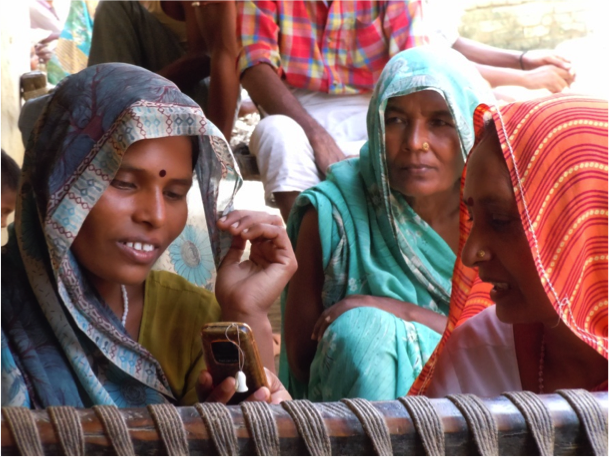Hi, my name is Marianna Hensley, Program Quality Manger for Health with Catholic Relief Services (CRS) in India. I currently support the Reducing Maternal and Newborn Deaths (ReMiND) project that CRS implements in partnership with Dimagi, Inc. and Vatsalya.
The ReMiND project works with government community health workers (CHW) to improve the frequency and quality of their home visits to women and children. CHWs use basic mobile phones operating Dimagi’s open-source CommCare software, which equips them with job aids to support client assessment, counseling, and early identification, treatment and/or rapid referral of complications. With the project’s use of CommCare as a case management tool and job aid for CHWs, leveraging information and communication technologies (ICT) for project monitoring and evaluation (M&E) with the same software platform was an obvious choice for ReMiND. All routine project monitoring is done through CommCare operated on basic mobile phones while data collection for the project’s baseline household survey was done using CommCare on tablets.
Lessons Learned: For all data nerds out there, imagine the excitement of realizing that ICT-enabled M&E means you get all those numbers now! Beware the lure of real-time data with ICT for M&E.

With the use of ICT for data collection in either routine monitoring or evaluation comes the strong temptation to ask every question you can think of—just because it’s so easy to capture responses with fewer worries about the delays or errors typically associated with manual data entry following paper-based collection. The risks are multiple: 1) you find yourself left with more data than you can or feasibly will analyze and use; and 2) you hazard user (data collector) and respondent fatigue from a questionnaire that delves too deeply into non-essential information.
Faced with the lure of real-time data from ICT, M&E practitioners must remember more than ever to focus on the need to know information that supports project or evaluation decision-making and objectives.collector) and respondent fatigue from a questionnaire that delves too deeply into non-essential information.
Hot Tips:
- Make sure to choose an ICT device that fits your needs in terms of screen size and resolution. Long questions or lists of select options are easier to deal with on a larger-screen rather than on a smaller-screened device that requires scrolling.
- Don’t forget to assess the battery life of your device as part of field testing an ICT tool. And have a plan that includes resources such as solar or car chargers to ensure devices are adequately charged throughout data collection or monitoring.
Rad Resources: The ReMiND project’s monitoring tool application and baseline survey application are available for free download on CommCare Exchange.
ReMiND is featured as a case study and the example of M&E in mobile health programming in the Global Health e-Learning Center’s new mHealth Basics course.
The American Evaluation Association is celebrating Information and Communication Technology for Development (ICT4D) for Monitoring, Evaluation, Accountability and Learning (MEAL) week. The contributions all this week to aea365 come from members who work in ICT4D for MEAL. Do you have questions, concerns, kudos, or content to extend this aea365 contribution? Please add them in the comments section for this post on the aea365 webpage so that we may enrich our community of practice. Would you like to submit an aea365 Tip? Please send a note of interest to aea365@eval.org. aea365 is sponsored by the American Evaluation Association and provides a Tip-a-Day by and for evaluators.
